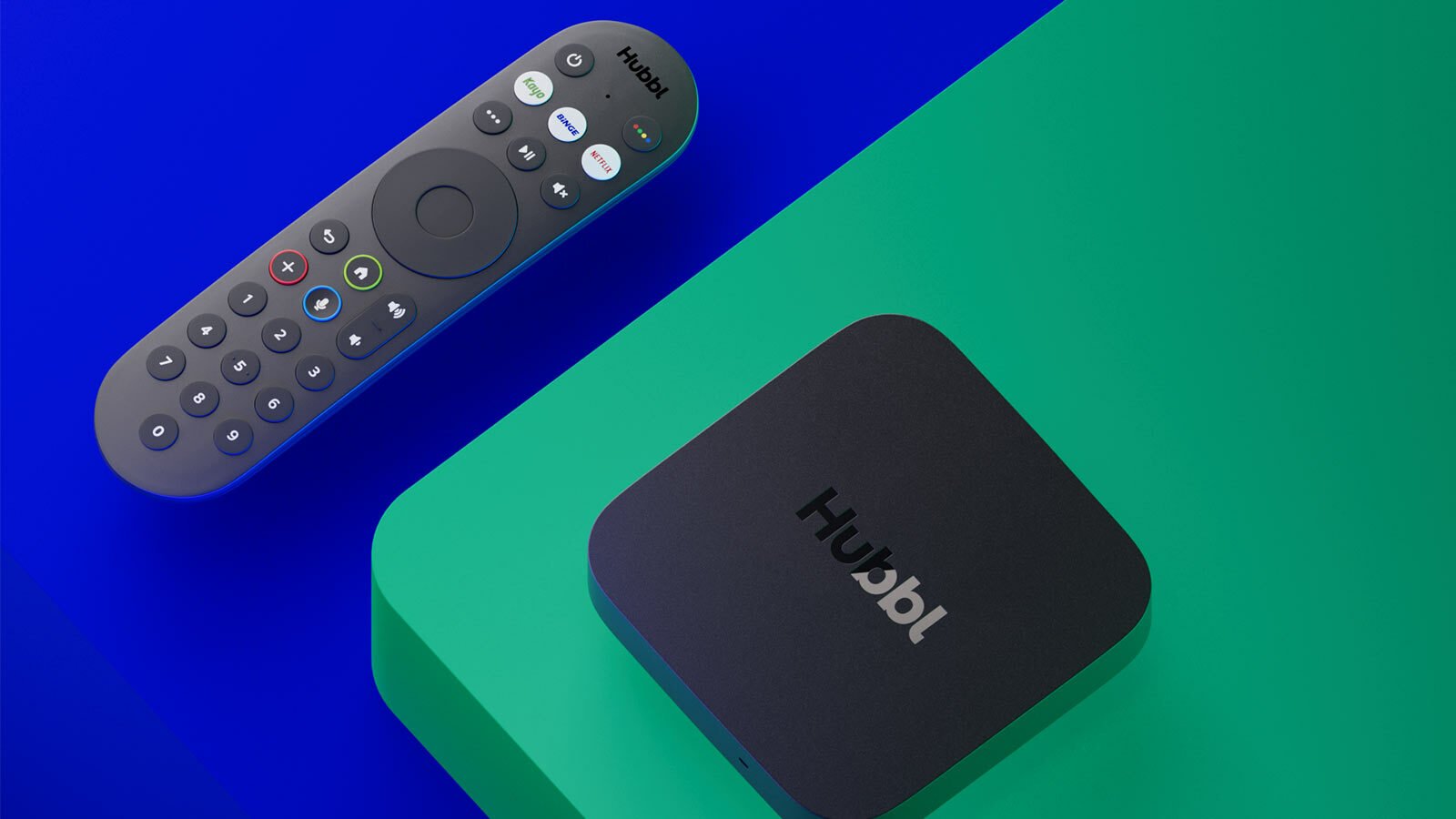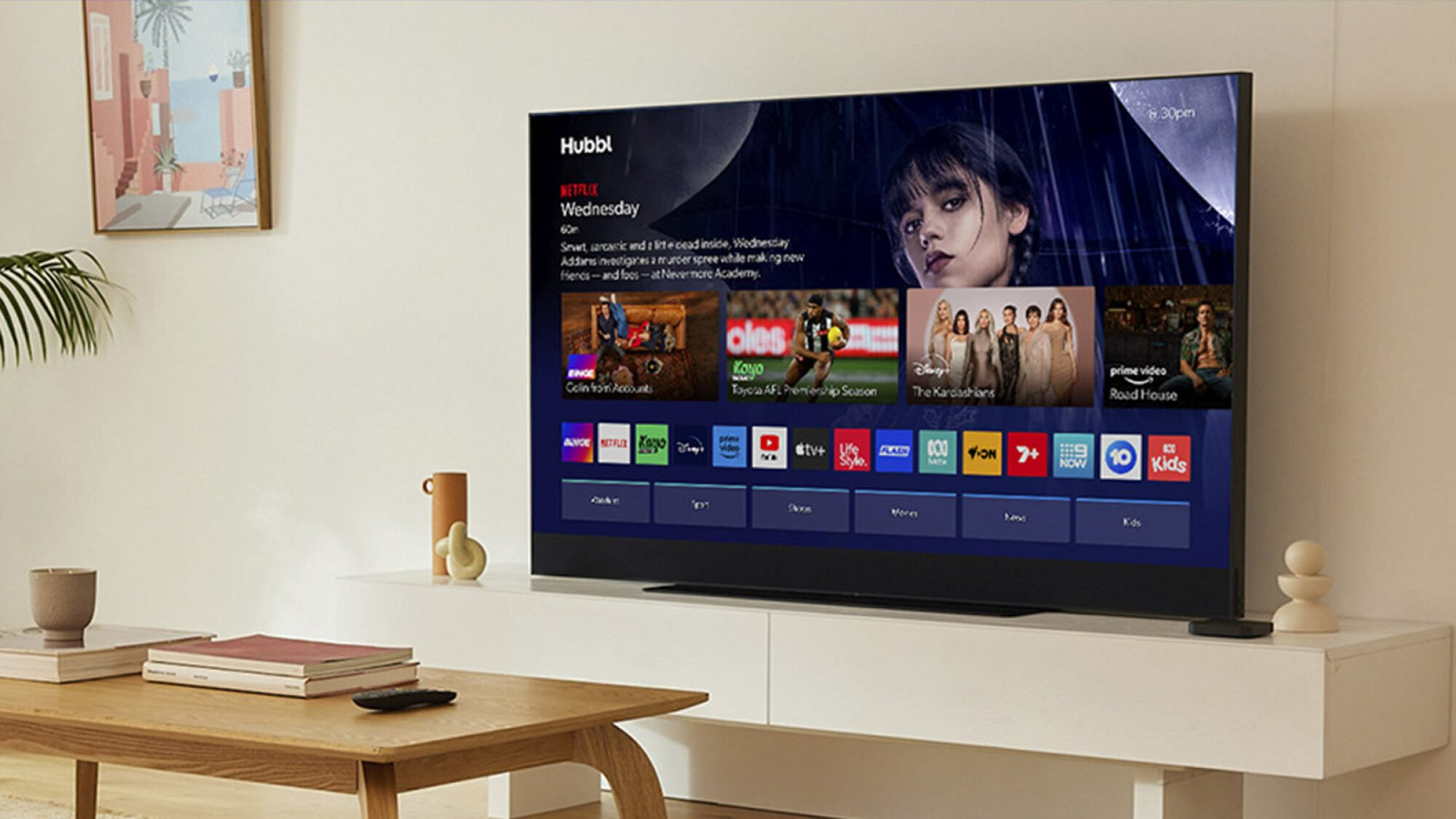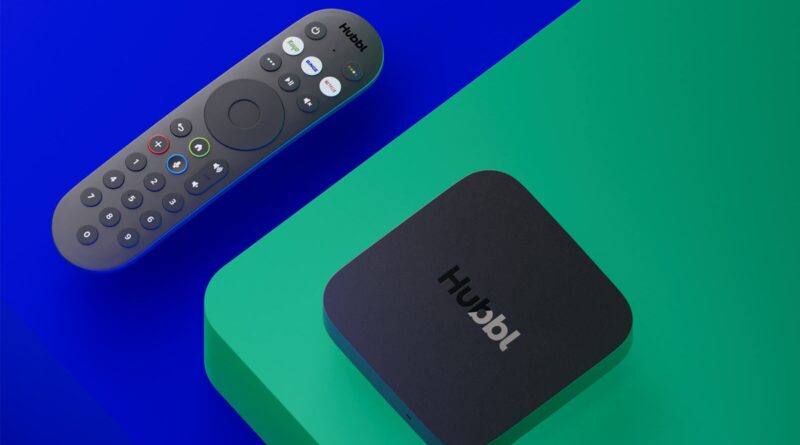What is Hubbl? Inside the new TV technology changing how we watch

By now, you’ve likely seen some advertisements popping up around the place for Hubbl. It’s some kind of entertainment product, but it’s not a new streaming service. What exactly is it?
Hubbl is both a new line of hardware, as well as advanced operating system designed to combine your streaming services and free-to-air TV together. But is that all marketing hype, or is there some truth to that branding? Let’s start with the very basics:
What does it do?
Simply put, Hubbl is a TV and streaming aggregator. Hubbl combines your streaming subscriptions onto one interface, and merges that with existing free-to-air TV channels. With this, it allows you to create personalised watchlists that factor in your streaming services, and ‘Continue Watching’ functionality that is consistent across everything you watch. The hope is that Hubbl will simplify how you search for and watch content, as well as provide the ability to manage your eligible subscriptions in one place.
Doesn’t my smart TV do this?
In varying degrees, yes. But Hubbl is more than just a homepage to access your existing apps on. The first thing you notice when using Hubbl is how it seamlessly integrates streaming apps with live TV.
Do you ever stumble upon a reality show (or otherwise) on free-to-air channels that immediately gets you hooked? Well, Hubbl automatically informs you of which streaming service you can find more of that show on, meaning you can immediately go back to the first season for context, or you can add it to your multi-app watchlist and start watching at your own pace.
What streaming services work on Hubbl?
At the time of release, alongside native apps Binge, Kayo Sports, LifeStyle and Flash, you’ll also find Netflix, Disney+, Prime Video, YouTube, Apple TV+, iView and ABC Kids, SBS On Demand, 7plus, 9Now and 10 Play.
Stan, Optus Sport, and Paramount+ are slated to join the Hubbl platform soon.
Getting your hands on Hubbl
If you’re interested in getting started with Hubbl, you have two choices. The first is the A$ 99 Hubbl “puck” device (just called Hubbl). It’s a small device which you connect to your existing TV via HDMI. It’s relatively simple to set up, and the remote functions well with most existing TVs. This will likely be the most popular entry point into Hubbl.
Additionally, there is also the Hubbl Glass smart TV, with a built-in sound bar and Hubbl preinstalled. Starting at A$ 1,595 and available in both 55” and 65”, Hubbl Glass features a 4K Ultra HD Quantum Dot Display with 8.2 million pixels, hands-free voice control, and six powerful speakers built-in for 360° Dolby Atmos surround sound. Hubbl Glass is available in two sizes and five colours (Anthracite Black, Ocean Blue, Racing Green, Dusky Pink and Ceramic White)
If you’re in the market to buy, Hubbl Glass is currently exclusive to Harvey Norman and Hubbl.com.au, while the Hubbl puck is available at JB HI-FI, Harvey Norman and Hubbl’s website.
How much does Hubbl cost?
The standalone Hubbl device has a launch price of A$ 99. For the Hubbl Glass, there are two different size options available:
-
Hubbl Glass 55” – A$ 1,595
-
Hubbl Glass 65” – A$ 1,995
There is no monthly subscription cost for Hubbl, as it’s just a portal through which you access your existing services (both paid and free). However, separate app subscriptions are still needed for some services.

How does Hubbl subscription bundling work?
A strong selling point for Hubbl is “Stack & Save”, which lets you stack eligibale streaming services Binge, Kayo, Netflix, Flash, and Lifestyle. Essentially, the more streaming apps that you connect to through Hubbl, you earn a stacking discount on your monthly bill.
At launch, if you stack 3 apps through Hubbl, you save $ 5 a month. If you stack 4 apps, you save $ 10 per month. If you add all 5 eligible apps, you can save $ 15.
Is Hubbl Worth It?
The Hubbl interface is surprisingly snappy, intuitive, and seamlessly integrates traditional free-to-air broadcasts into its streaming offering. Many people these days will set up a TV and never even connect to an aerial for free to air TV. In recent years the TV watching experience has boiled down to frustrated scrolling through number of apps, being blasted with content but still never finding anything to watch. With its combined watchlists and TV guide, Hubbl does a good job of changing up that routine. The ability to connect to free-to-air TV without an aerial is also a feature that will likely push a few people into trying it out, and if you’re a prolific streamer, you can save some good money on your monthly content costs.
Learn more or purchase either device on the Hubbl website, here.

